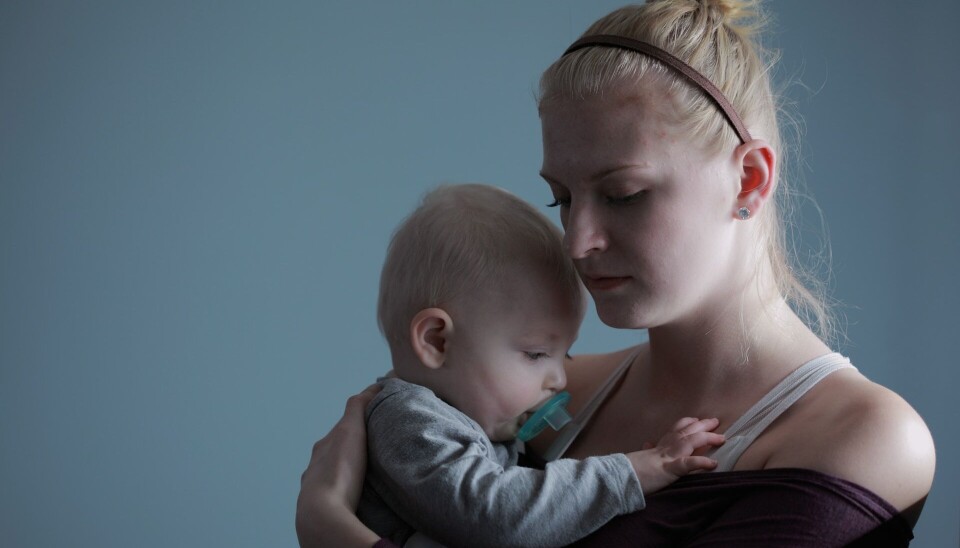
“I wouldn’t recommend it”
What is it like to be a student in Norway when you have kids?
Nearly a quarter of university students in Norway are also parents. How do public institutions accommodate them? What is it like for people who choose to have kids and take a degree at the same time? Inter Universitas spoke with one new mother to find out.
Surprising Statistics
When one imagines the typical university experience, it doesn’t usually include raising kids. However, this is the reality for more people pursuing post-secondary education than the casual observer might initially expect. As one watches the students trekking across campus to class, browsing the shelves of the library, or chatting with peers in Blindern’s cobbled squares, one hardly guesses that one out of four of these individuals is also a parent.
Though the experiences of student-parents are often invisible, they make up a significant portion of those enrolled in university. According to Norwegian and EU databases, twenty-three percent of students in Norway are also parents. This percentage is the second-highest in Europe, following Iceland, where nearly a third of those in higher education also have children.
Parents are a surprisingly large demographic of students in Norwegian higher education; as such, their experiences ought not to be overlooked. Does the government have strong enough programs to help parents who are studying? Do the universities offer enough support? I spoke with one new mother to get her perspective.
A Parent’s Point of View

Emma Setså (21) is a Norwegian citizen, studying to be a kindergarten teacher at OsloMet. She is also mother to a baby girl coming up on her first birthday, and was kind enough to chat with me over video call while her daughter was down for a nap.
Emma has always wanted to be a mother, though her journey to motherhood was an unexpected one. Her daughter was born in the summer of 2022, at the end of her second year of study. She knew there would be challenges navigating university and motherhood at the same time, but some things have been easier than she anticipated.
Student-Parent Finances
In a robust welfare state such as Norway, affordable childcare, (almost) free education, (almost) free healthcare, paid family leave, and other government subsidies make it a feasible option for everyday Norwegians to work towards a degree while starting a family.
In many countries around the world, education comes with a large price tag. Taking care of family is also an expensive responsibility. However, the Norwegian government does its best to subsidize these endeavors for its citizens.
“I’ve been very lucky being able to take a year off,” Emma said.
In Norway, nearly a full year of parental leave is covered by Lånekassen, a loan fund sponsored by the government that provides assistance to Norwegian citizens, as well as foreign nationals who meet certain criteria. New parents are able to take time off from studying while still receiving financial support, which allows them to take care of their children while staying on track scholastically.
The basic loan package given to a recipient of Lånekassen is 137 906 kr per year, though the amount can vary depending on whether a given recipient is living at home with their parents, or on their own, or if they have to pay tuition. If the recipient maintains normal study progression, about forty percent of this sum, or 55 163 kr, is converted to a stipend, which does not need to be repaid, while the remaining portion stays a loan.

However, if a student meeting the qualifications for Lånekassen has a child during the course of their studies, they can receive a parental grant for up to forty-nine weeks after their child is born. Essentially, the recipient receives the same amount of money as they would normally, but one hundred percent is converted into a stipend, rather than just forty. While the new parent must be enrolled at a post-secondary institution in order to qualify, an approved leave of absence from said institution can still be covered by the grant.
If a recipient of Lånekassen has children under sixteen, they can also apply for additional loans, for up to 55 820 kr per year. In addition, Lånekassen offers other grants proportional to one’s external income, assets, and the amount of children one has. Those who qualify for the 2023-2024 school year can expect to receive 1 954 kr in extra grant money per child, per month.
Generally, regulations for repayment of loans facilitated by Lånekassen are the same for all borrowers, regardless of whether or not they have children. However, if a recipient has a child during the repayment period, after they have completed their studies, interest on the loan can be waived for up to twelve months. The interest rates for Lånekassen loans fluctuate every two months, in order to accurately reflect the market, but any borrower can apply for a fixed interest rate.
With these various types of assistance available to individuals who become parents during the course of their studies, it is possible for students like Emma to invest in their education and build their careers while raising a family.
“I thought the money situation would be very hard,” Emma admitted. “But we’re able to get almost double the amount from Lånekassen, and more of it is a grant instead of a loan.”
Unresponsive University
While Emma is satisfied with the ways the state helps student-parents like herself, she feels that her university has not offered enough support.
“I felt like the government helped, but the school didn’t.”
Though the financial aspect of juggling new motherhood and pursuing a university degree has been manageable thanks to institutions like Lånekassen, dealing with her faculty’s administration has been much more difficult than she initially foresaw.
“I thought it would be easy getting through my classes,” she said. “I thought I would finish my exams for my second year, give birth, and come back for my third year after my maternity leave.”
However, Emma was forced to miss a lot of class due to difficulties during her pregnancy, which prevented her from meeting the minimum attendance required to be eligible for one of her exams. Although she had a legitimate excuse for missing school, the university was not flexible.

“I was very sick during my pregnancy, so I had a lot of appointments, and I got my doctor to write a note to say that I was getting medical help, so that was why I wasn't there all the time. [But] they didn't really care.”
Because of this lack of cooperation from the university, Emma needs to sit one more exam to complete the second year of her bachelor’s and move on to her third. Though she has reached out to the university multiple times via telephone and email to arrange for this exam, the administration is unresponsive.
“They just don’t answer,” she said. “They don’t treat upcoming parents as they should do.”
Institutional Insight
To get OsloMet’s side of the story, I corresponded with Hege Wamstad-Finsrud, who is the Office Manager in the Section for Academic Affairs and Internationalisation. Though, due to issues of confidentiality, she could not comment on Emma’s case in particular, she was sorry to hear that any student felt unheard by the administration. She was also able to tell me the general approach of the institute in accommodating the needs of students who are expecting children.
“The needs of students who are pregnant can vary greatly,” Wamstad-Finsrud noted. “Some students don't reach out to us until they need to take a leave of absence, while others contact us early on to inquire about the options available to them during pregnancy and throughout their course of study.”
Particularly in the case of the Early Child Education program, in which Emma is enrolled, it can be difficult to compensate for missed attendance due to the practical requirements of the course.
Drawing from the program plan for Early Child Education, Wamstad-Finsrud pointed out that “The program is structured around work and teaching methods, with collective learning processes that cannot be replaced by individual study methods [...] Students who exceed the absence quota due to valid documented absences may be given compensatory assignments [...] Absences exceeding 40% will result in the student being unable to sit for the exam, regardless of the reason for absence.”
Ultimately, while there is some room for flexibility within the requirements of the program, some situations can go beyond the university’s capacity for accommodation.
A Shift in Perspective
If Emma is finally able to take the exam leftover from her second year, she will finish her degree in 2025. While it will take her a few years longer to complete her bachelor’s than she planned, she’s happy with the direction her life has gone.
“Having kids has actually made me realize how young I still am,” she said. “I have so much time.”
































